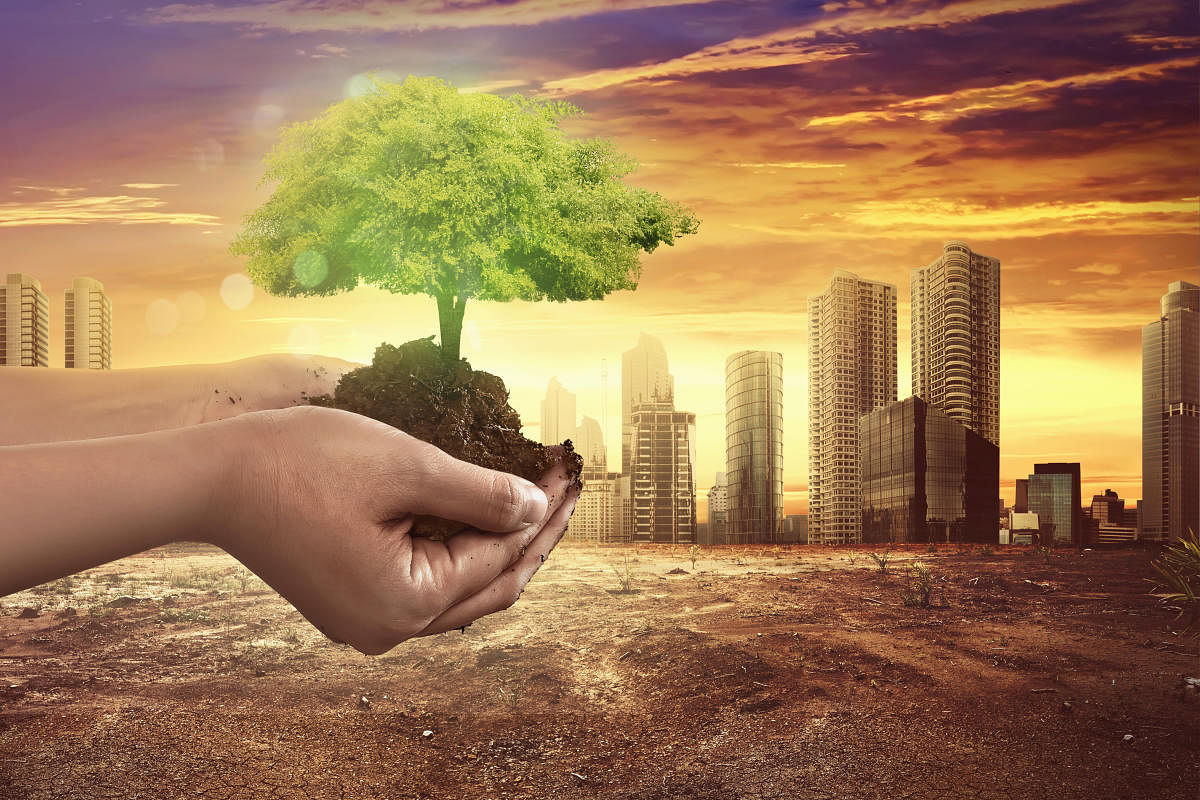
With growing awareness on how the environment is being severely impacted due to climate change, many efforts are underway to mitigate the risks. In the recent past, a number of studies have indicated that the impacts of climate change are accelerating, and they are largely driven by human-caused greenhouse gas emissions. This resulted in the Paris Agreement being formed to device plans to reduce carbon emissions and keep the global temperature rise below 2°C.
In the Global Risks Report 2018, the World Economic Forum has ranked extreme climatic events and natural disasters as the top two risks in terms of likelihood. Additionally, according to an annual risk survey conducted by them, it was revealed that environmental risks have grown in prominence in recent years. These include extreme weather events, failure of climate change mitigation and adaptation, and human-
induced environmental disasters.
The report also highlights the occurrence of extreme climatic events such as heat waves. Globally, the number of extreme climatic events has increased almost three-fold in a 35-year period. Not only are these events becoming more frequent, they are also becoming costlier in terms of damage. For example, Hurricane Harvey is said to be the costliest disaster to strike the United States, with an estimated cost of damages being around $190 billion.
To mitigate climate change, various action plans have been put in place. The Paris Agreement brought together various countries to combat climate change. It was based on the principle of common but differentiated responsibilities in arriving at the nationally determined contributions. India has pledged to reduce the emission intensity of its GDP by 33% to 35% by 2030 from 2005 levels.
While there is an action plan in place to enable people to shift to renewables, fossil fuels still account for about 70% of the power generation in the country. However, there are strong efforts to decarbonise the economy.
India already has a programme on renewable energy in place and has set a target of about 175 GW of energy by 2022. The government also plans to reduce dependency on biomass fuels for cooking by providing alternative cooking solutions such as liquefied petroleum gas (LPG) connections. These efforts would reduce the impacts of air pollution, alleviate the pressure on forest resources, and reduce carbon emissions.
Currently about one-tenth of the global energy need is met through renewables and since 2015, over half of the share of newly installed capacity has come from renewables. For instance, the newly constructed solar park at Pavagada in Tumukuru district aims to generate around 2700 MW by the end of this year.
Sustainable practices
Forests play an important role in mitigating the effects of climate change as they can help create carbon sinks needed to mitigate associated risks. Proper infrastructure could drive green growth through innovations in areas like rooftop solar energy generation and creation of greenbelts in cities. Such greenbelts play an important role in the fight against climate change.
There has been a steady increase in India’s forest cover over the years. As forests are well known for the role they play in reducing carbon emissions, India has put in place a plan called the ‘National Mission for Green India’. This aims to bring in additional 10 Mha of forests either through afforestation or reforestation. The success of the efforts will depend on various factors like choosing suitable areas for afforestation and reforestation and the selection of appropriate plant varieties.
What can also help in this regard is having sustainable agricultural practices. Agriculture accounts for more than 70% of the freshwater withdrawals globally. Hence, sustainable management of groundwater sources is important. In this light, efforts are on to restore and rejuvenate groundwater. Such activities are important for droughtproofing vulnerable communities.
The 17 UN Sustainable Development Goals reinforce the need for urgent action to combat climate change. Various government and private agencies are engaged in reducing the vulnerabilities to climate at various levels. Collectively, these priorities would enhance our resilience to climate change.